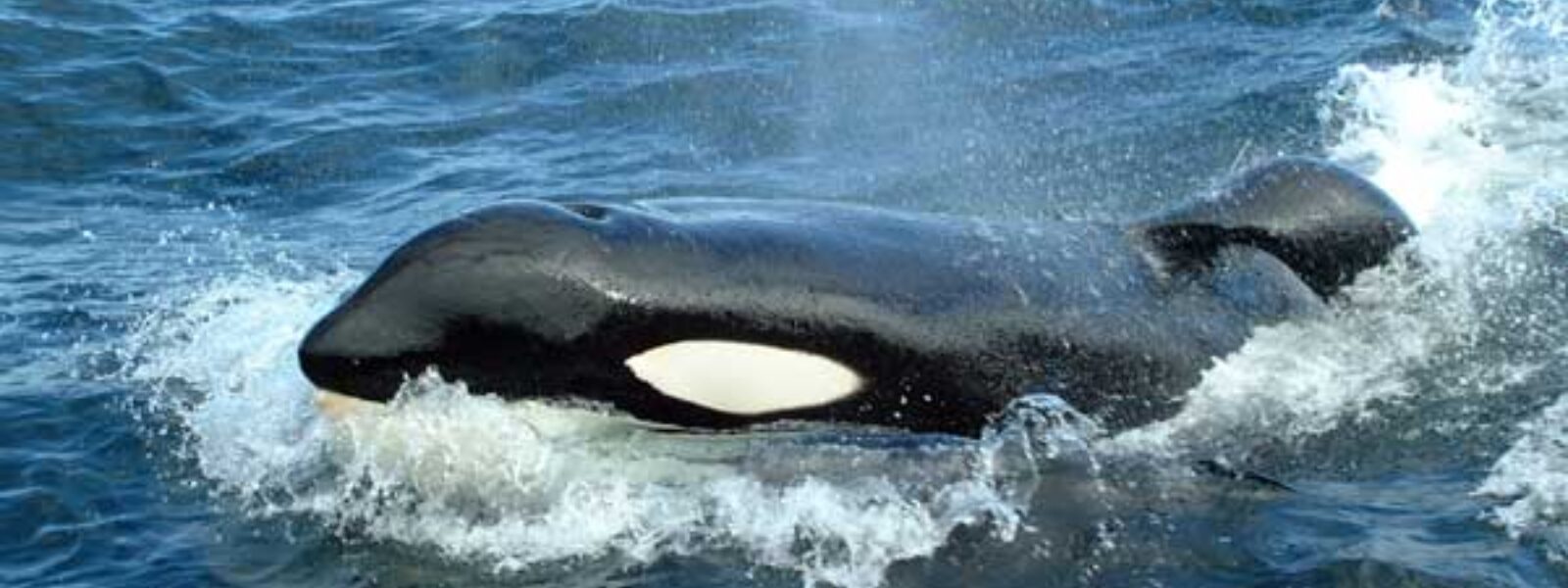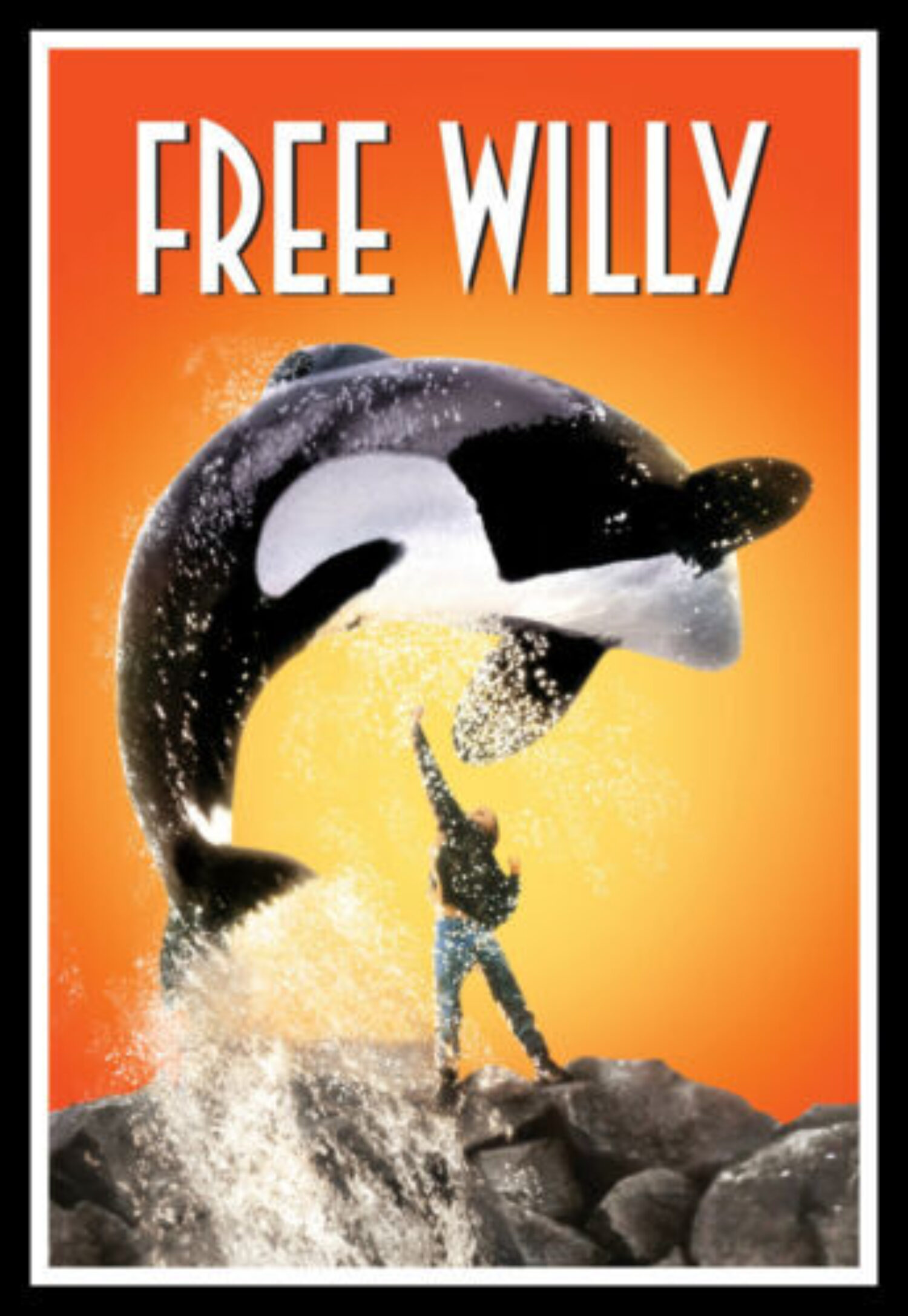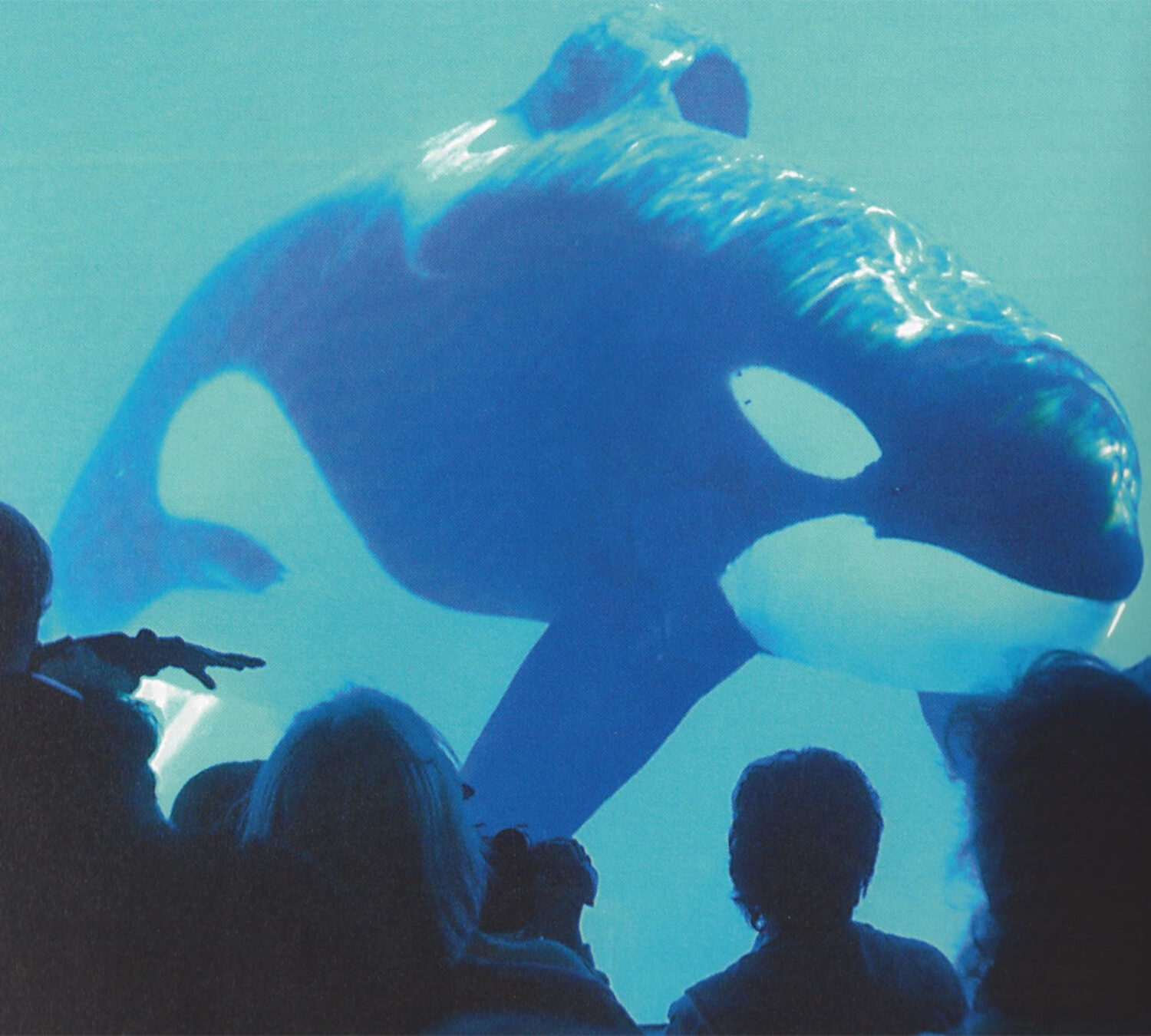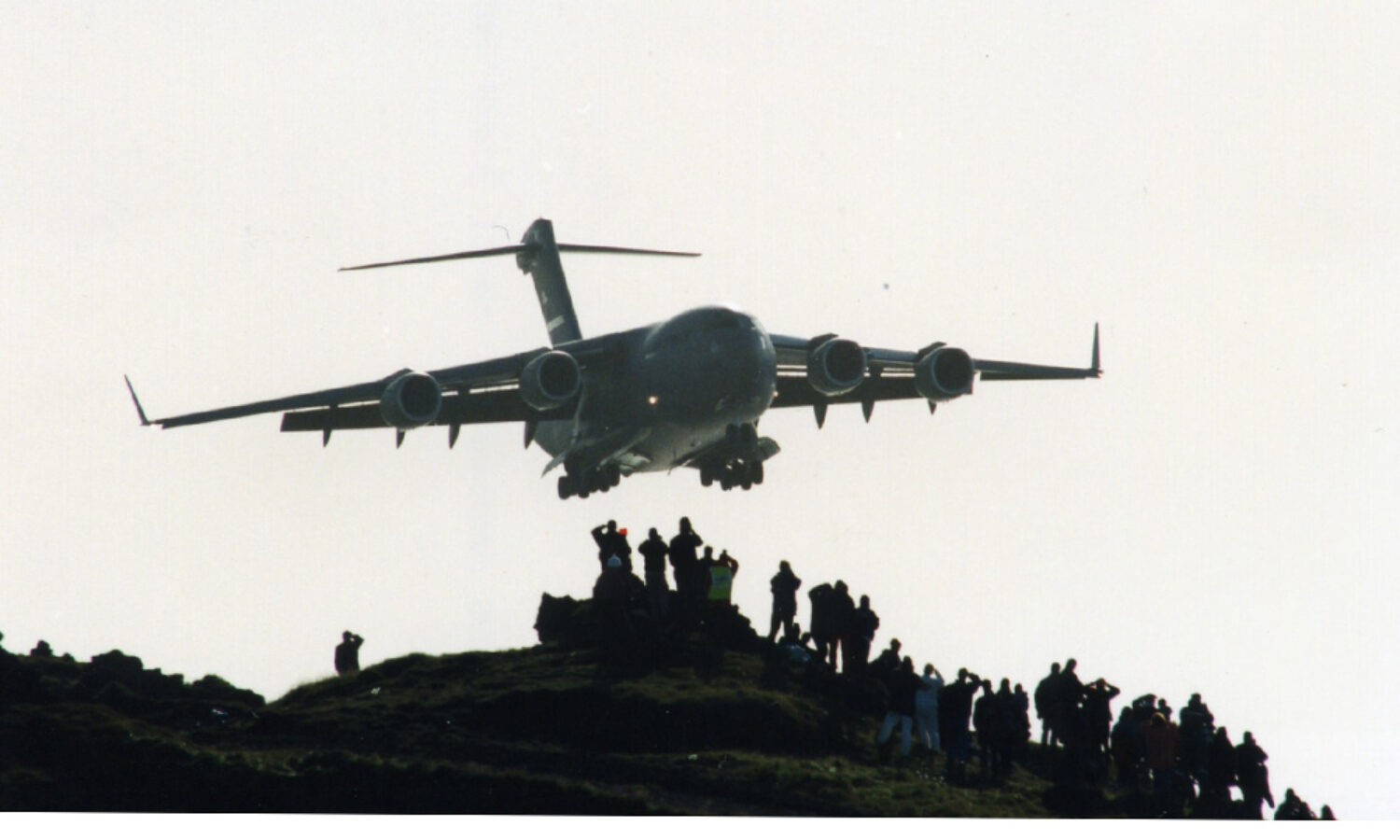
“Free Willy” Paved the Way to Ending Whale Captivity (Part 1 of 3)
By Hannah Hindley
Hannah Hindley is a naturalist, science writer, and conservationist. She is the recipient of the Barry Lopez Prize in Nonfiction, the Ellen Meloy Desert Writers Award, and the Thomas Wood Award in Journalism, among other honors – see more of her work at hannahhindley.com. She often spends summers among the wild whales in Alaska, working as a wilderness guide.
THE FIRST LEAP
On the movie poster, water takes up the lower two thirds of the frame, dark and sparkling. Above it, standing atop a stony breakwater, a boy stands with one arm raised high, and above him – with a muscular body that fills the sky – an enormous orca breaches toward the open sea.

Photo Credit: Warner Brothers
When movie viewers discovered that Keiko was still in captivity, IMMP found itself at the center of an unprecedented – and as-yet unreplicated – campaign to free a captive orca. As heartwarming and simple as the movie poster made it seem, the real story that follows was far knottier and more elaborate than any Hollywood plot.
Thirty years after the release of the film, we pause to look back on its impact, and forward to the future of all whales and dolphins still in captivity, in our metaphorical backyards and around the globe.
KEIKO
When Dave Phillips, the founder and director of IMMP, first met Keiko, he sat alone in the empty bleachers of a theme park in Mexico, looking down at the tiny tank where the orca floated. The distant sound of traffic growled, but the lethargic whale below made no sound; he had stopped vocalizing many years before.
Keiko hadn’t been born in captivity – his life had begun in Iceland’s cold and luminous sea. He swam with his wild family, following his mother through flurried schools of fish and diving birds, learning the dialect of his pod, diving through prismatic green currents.
“His dorsal fin – which should have stood taller than a grown man – drooped. Infection bloomed across his skin.”
When he was captured as a two-year-old calf by a commercial herring trawler, he lost this world.
Keiko’s captors brought him to a small Icelandic aquarium, and from there he was sold to a marine park, MarineLand, in Ontario, where larger captive killer whales slapped and bumped him against the walls of his concrete tank. From there he was sold again, and transported by airplane across international borders to Mexico City, where he breathed strange high-altitude smog, ate warm fish, and ground his sharp teeth flat from gnawing at the edges of his too-small tank.
His dorsal fin – which should have stood taller than a grown man – drooped. Infection bloomed across his skin. If the directors of Free Willy (in search of a trained orca and finding little luck convincing US theme parks to loan them any of theirs’) hadn’t found him and launched him to stardom, he would have died in this concrete prison, possibly quite soon after Free Willy was released. Keiko was severely underweight and his health was declining quickly.
As soon as the movie was released, our 800-number at the end of Free Willy began flooding with calls, and Warner Brothers was in the spotlight too. Viewers wanted to know if the real Willy was free, and when they learned the answer, they demanded justice. Director Dick Donner called Dave urging our IMMP team to take on the rescue of Keiko.
At first there was reticence as Dave asked Dick: “You do know we’re in the business of wild whales, right?”. Dick was not to be deterred. “Just go down there; check it out. You can do this!” Still, under mounting pressure to do something, Dave found himself on a flight to Mexico City.
“Keiko,” he said, “we’re taking you home.”
Sitting above Keiko’s concrete tank, Dave didn’t expect to be so moved by the enormous figure drifting listlessly below him – a highly social animal alone in a tiny prison. Warm water sloshed against the edge of the enclosure. The infections under Keiko’s fins were cracked and raw. While the streets of Mexico City rumbled nearby, Dave pulled out a yellow notepad and tried to calculate what it would take to relocate Keiko, bring him back to health, and give him a chance to be free. The project seemed to be such a long shot and insurmountably expensive. But he thought back to all the voicemails left on our phone lines and all the conversations he’d had leading up to his flight. Everyone he spoke with told him the same thing: “If you take this on, we’ll help.”
And so IMMP took the leap. Dave assembled a team of experts and the IMMP staff, including long-time captive whale advocate Mark Berman, to incorporate the Free Willy/Keiko Foundation to raise the funds and take possession of Keiko, generously donated by Mexico City’s Reino Aventura, where Free Willy had been filmed.
And sure enough, help came. More than $7 million in donations rolled in from Keiko’s friends around the world. IMMP joined forces with Warner Brothers, telecommunications billionaire Craig McCaw and his then wife, Wendy McCaw, and the Humane Society of the US. Later, the Ocean Futures Society took on a key role and helped immensely.

Keiko, in his state-of-the-art tank at the Oregon Coast Aquarium. Photo Credit: Free Willy / Keiko Foundation
But the “leap” wasn’t as easy as the poster made it look. No one had ever attempted anything like this before. From convincing the owners of Keiko to donate him to the Free Willy / Keiko Foundation; to convincing the president of Iceland – a whaling nation – to accept Keiko back into his home waters; from transporting Keiko to a custom-built seawater rescue center in Oregon; to teaching him to hunt for live fish; the route from that tiny tank in the mountains of Mexico back to Keiko’s home waters was far more circuitous than the plot of any movie.
In an extraordinary crowning act of goodwill, the top brass and pilots of the US Air Force unanimously agreed to provide the only jet in the world that could fly nonstop from a tiny airport in Oregon to a tiny airstrip off the coast of Iceland for Keiko’s final journey home.

Keiko arrives in Iceland via Air Force transport. Photo Credit: Free Willy / Keiko Foundation
In this way, Keiko, his care team, and Dave found themselves 40,000 feet above the ocean: Dave strapped into a fold-down seat; Keiko suspended by a sling in water. Once again, just like that first fateful day in Mexico, Dave found himself sitting, watching an amazing 11,000-pound sentient animal in a tiny tank . . . but this time Keiko was surrounded by friends.
Dave got a chance to unbuckle from his seat and climb up next to Keiko on that flight, and speak to him.
“Keiko,” he said, “we’re taking you home.”
***********************************
(To be continued...)
Hear Dave Phillips’ discussion of Keiko with BBC Radio.
***********************************
